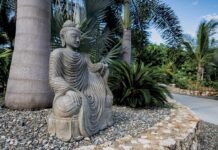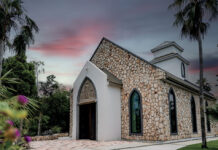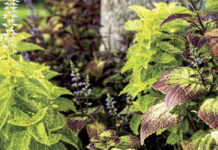There are countless examples of countries whose development was a direct result of the discovery of large mineral, gemstone or precious metal deposits. In other cases growth was due to the advent of large-scale farming of vast tracts of arable land for agriculture or raising livestock.
However, Cayman’s story is different. This small dot on the map has none of the above, but can still boast of an incredible development trajectory in the last 50 years. Our transformation in just five decades outstrips that of most other Caribbean islands and is envied by many others outside our region.
Back then
I consider myself fortunate to have witnessed and played a part in this early development. Grand Cayman back in 1956, with a population of around 12,000, mainly eked out a living from its seamen, who worked on foreign merchant ships and sent hard-earned dollars home to their families from far-flung parts of the globe.
Ironically, despite the seafaring nature of Cayman’s menfolk, communication between the island’s five districts was extremely difficult. This was because the island’s roadways were mere sand tracks, some of which passed through private properties with gates to keep the few head of livestock in and trespassers out.
Subsequently, in those days, a trip to East End could take many hours over rough and narrow potholed tracks.
The upshot of this rudimentary and adhoc track network was that there was limited interaction between the residents from the different districts. Hardly conceivable these days on an island which covers only 75 square miles and has its own airline.
Back then, it was possible to easily identify someone from a particular district by their accent, even though the island is 22 miles long by eight miles wide. Because of this seeming remoteness between districts, a little mistrust and mild hostility existed towards those considered to be outsiders.
The only telephone service was provided by Public Works Department run by Esterly Tibbetts. It had a one-line copper wire strung loosely along the routes to keep in touch with the other districts.
The birth of public roads
In 1956, I worked as a surveyor in the survey department of the Jamaican Public Works Department. At that time the British government assigned Cayman to be administered by Jamaica and that is how I became involved in helping build a road network for the islands. Our team of four surveyors was sent here to survey the existing roadways in order to design and oversee an improved road system.
It took about four months of hard work to complete the task. The following year, two of us returned to co-ordinate and supervise the construction, which was given to a US company. That particular project took about three years. Some of the roads were paved, the first being the West Bay corridor and the main streets of George Town. The remainder were re-surfaced with marl from large quarries and rolled to solid compaction.
Challenges
A major challenge for us surveyors was the plague of mosquitoes that harried us and were constant companions along the routes. I remember having to have a worker fan the insects from my face in order to allow me to read the instruments, which were not as sophisticated as the modern counterparts but required you to read a micrometer through a magnification glass and handbook at every reading.
On the various routes, when rambunctious land owners would sometimes take issue with us, we relied on a well-respected ex-Army gentleman. Roddy Watler knew everybody and was able to smooth the way for us through private property.
I am convinced that the rapid development and stability of Grand Cayman was due in large part to modernising the road system. It not only brought communities together and fostered cooperation between different groups on the island, having an integrated arterial network helped foster entrepreneurial spirit, now so much a hallmark of Cayman society.
The building of an integrated road structure had a domino effect, I believe, and was rapidly followed by significant progress in the control, if not eradication, of the island’s pesky mosquito problem. Getting to grips with that particular issue made the island more hospitable and eased the way for the development of the tourism industry, which up until then was just a trickle of those that yearned for the unspoilt beauty of ‘the land that time forgot’.
Of course, huge credit has to go to the foresight of men like Sir Vassel Johnson, who pioneered the offshore financial industry. This today commands the respect of all right-minded individuals and provides employment and stability to our country.
Cayman Brac
Cayman Brac was also included in the road improvement plan. I was sent there to survey a road to go up on the Bluff and traverse the centre of the island to end at the lighthouse. I started at what is known as the Bight and traversed through dense bush and jagged cliffs to reach the lighthouse in about three months. The route was not completed and it was not until the early 1980s that any further progress was made.
Today there are miles of roads, large subdivisions and people from Cayman and abroad, rushing to secure a retirement villa or piece of property on the Bluff. There again it took the development of our roads to spur such progress.
Then and now
I look back at those pioneering days with some pride at having had a hand in the development of this land.
It was also here that I met and fell in love with a young West Bay beauty who is now my wife, Celeste. I’ve always half-jokingly thought of her as my reward, who I took back home to Jamaica with me where five of our six children were born.
We returned in 1977 and after several months opened our surveying company, Patrick Broderick & Co. Ltd. which is still in business today. We continue to provide modern surveying services to clients large and small in all three islands with a team of qualified and dedicated surveyors who produce work that ensures permanence to property boundaries and peace of mind to our clients.






























